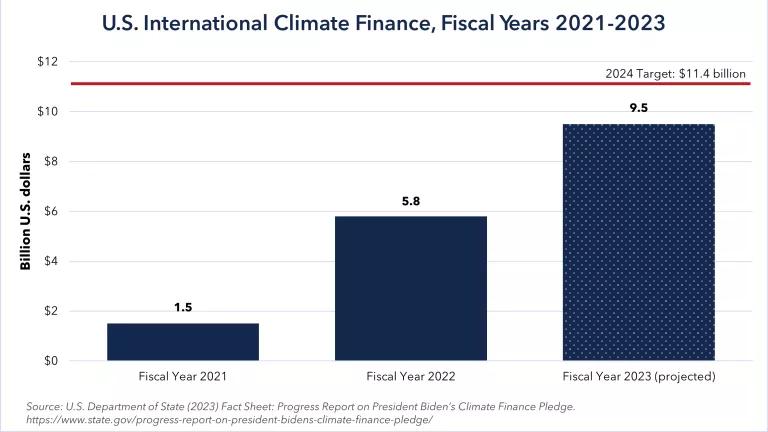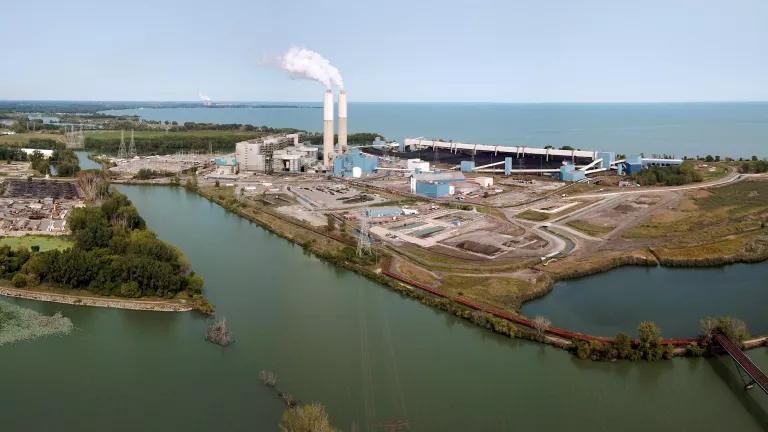INDIA GREEN NEWS: Solar Power Costs Reach New Low in Rajasthan; Indian Industry Urged to Move to Low Carbon Economy; 2015 was Hottest Year on Record
India Green News is a selection of news highlights about environmental and energy issues in India.
January 15-22, 2016
ENERGY
Solar Power Costs Drop to Record in Rajasthan Auction in India
The price paid for solar power in India touched a record low of 4.34 rupees (or 6 cents) a kilowatt-hour in the latest auctions held in the state of Rajasthan, where a total of 420 megawatts of capacity was awarded, a government official said.
The aggressive levels bid in the solar auctions are relieving concerns that the projects might not be built, according to Bridge to India, an industry research group.
"Rajasthan and Andhra solar projects have the best profile in the Indian solar market, so developers may be willing to accept low returns," said Vinay Rustagi, managing director at Bridge to India. "The high quality of firms that these auctions have attracted mitigate all concerns about project conversion."
The state of Rajasthan has the highest solar installations at 1,264 megawatts of the total 5,130 megawatts capacity installed in the country.
(Bloomberg Business - January 19, 2016)
Solar power cost competitiveness to help India meet emission targets
Private energy producers once again bid for solar power projects at the lowest-ever tariffs in the latest auction that concluded on 19 January as India strives to cut carbon emissions by 35% and increase the use of renewable energy sources to generate at least 40% of its power needs by 2030.
Increased investor interest and bidding under the so-called reverse auction process where a winner is chosen based on the lowest price bid for the project are likely to make pricing of power generated from renewable energy sources more competitive, says industry watchers.
Fall in prices of solar panels and modules in global markets along with a firm policy push by the government in India to install 100 GW of solar power capacity by 2022--the largest renewable energy capacity expansion in the world--has increased investor appetite, leading to a tariff drop from Rs.18 per kWh a few years ago to a record Rs.4.34.
(LiveMint - January 21, 2016)
5 crore LED bulbs distributed, count to double in next 2 months: Piyush Goyal
Government on Thursday said Energy Efficiency Services has distributed over five crore energy-efficient LED bulbs so far and this count will nearly double to 10 crore in the next two months.
Energy Efficiency Services Ltd, a joint venture of PSUs of Power Ministry, has completed distributing five crore LED bulbs under Domestic Efficient Lighting Programme (DELP) on Thursday morning, an official statement said.
"Reduced peak demand of 1,600 MW through LED bulbs. Imagine alternative of setting up four 400 MW plants and associated pollution and land needed," Goyal tweeted.
"Almost 15,000 tonnes of Carbon Dioxide is not being emitted daily due to five crore LED bulbs," he tweeted.
(DNA India - January 21, 2016)
CLIMATE CHANGE
Government urges India Inc to move towards low carbon economy
To help India meet its climate targets agreed upon in Paris, the Indian industry will need to meet their obligations to move towards a low-carbon economy even as they capitalise on new business opportunities, the government said on Wednesday.
"There are huge opportunities in renewables across generation, evacuation, storage as well as energy management systems to bring it at par with conventional fuels. The challenge lies in finding off grid solutions and fully integrating renewables into India's fuel mix," said Ashok Lavasa, secretary, ministry of environment, forest and climate change, in a statement.
"It is equally a question of opportunities and obligations for the industry," he said.
The challenge facing the nations at the 21st Conference of Parties (CoP-21) in Paris, was to formulate an agreement which would allow the development process to continue while moving towards a low carbon future, the ministry official said...
(Business Standard - January 20, 2016)
2015 was the Earth's hottest year on record: US scientists
Last year wasn't just the Earth's hottest year on record - it left a century of high temperature marks in the dust. The National Oceanic Atmospheric Administration and NASA announced...that 2015 was by far the hottest year in 136 years of record keeping.
NOAA said 2015's temperature was 58.62 degrees Fahrenheit (14.79 degrees Celsius), passing 2014 by a record margin of 0.29 degrees. That's 1.62 degrees above the 20th-century average.
Although 2015 is now the hottest on record, it was the fourth time in 11 years that Earth broke annual marks for high temperature. Scientists blame a combination of El Nino and increasing man-made global warming.
(The Times of India - January 20, 2016)
CLEAN AIR & ENVIRONMENTAL HEALTH
Urban pollution in India: Particular about particulates
On January 15th Delhi wrapped up a drastic two-week experiment to reduce car emissions by restricting road use to odd- or even-numbered licence plates on alternate days (a method occasionally used in Beijing, São Paulo and a dozen other cities).
The odd-even test not only showed that such emergency measures can limit dangerous pollution; it showed how much more efficient public transport can be when road space is freed up to let it move.
In December the country's Supreme Court slapped a citywide ban on the registration of luxury diesel cars. Soon afterwards, the national government declared that it would speed up the introduction of stricter emissions standards for new passenger cars.
If both new sets of regulations come into effect by 2020, as is planned, new vehicles will emit only a fraction of the pollution they do today. Other initiatives include the expansion of Delhi's metro, measures to maintain roads better (the dust kicked up from these accounts for a big proportion of breathable particulates), restrictions on lorries entering the city, and plans to enforce the replacement or retrofitting of older vehicles. If all this is done, Delhi may get acceptable air in a few years' time.
(The Economist - January 16, 2016)
Indoor air pollution causing low birth weight: Doctors
One of the major reasons for low weight among newborns in rural India was the continuous exposure of pregnant women to indoor air pollution, according to doctors.
Doctors have said indoor air pollution caused by the 'chulhas' burning wood, coal and animal dung as fuel was the major factor behind the occurrence of a slew of diseases including respiratory diseases among women.
They said that apart from low birth weight, the continuous exposure of pregnant women to air pollution can also lead to brain deformity, asthma and improper growth among newborns.
(The Times of India, January 21, 2016)
Note: The linked articles and excerpts in this post are provided for informational puposes only and do not necessarily reflect the views or positions of the India Initiative or of the Natural Resources Defense Council.




